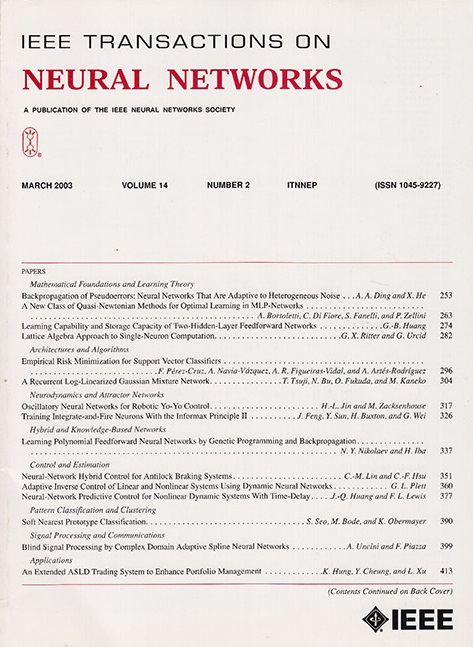OS-RRG:具有平衡诊断和注意干预的观察状态感知放射学报告生成。
IF 8.9
1区 计算机科学
Q1 COMPUTER SCIENCE, ARTIFICIAL INTELLIGENCE
IEEE transactions on neural networks and learning systems
Pub Date : 2025-07-24
DOI:10.1109/tnnls.2025.3589103
引用次数: 0
摘要
放射学报告生成(RRG)旨在为临床放射学自动生成详细的文本描述和诊断,减轻放射科医生的工作量,帮助没有经验的放射科医生,并最大限度地减少错误。RRG具有挑战性,因为需要生成描述各种医疗状况的连贯和临床准确的多句报告。虽然以前的诊断引导方法通过显式地将已识别的观测状态(os)(例如,积极的,消极的和不确定的)转换为描述,实现了令人印象深刻的诊断准确性,但这些方法在准确的观测状态识别和建立精确的状态-描述对齐方面仍然存在困难。这些挑战主要来自观察状态中固有的两个方面的不平衡(类间和类内)。在本文中,我们介绍了一个新的框架,观察状态感知放射学报告生成器(OS-RRG),旨在提高状态的识别及其与临床描述的一致性。我们的方法包括一个状态感知平衡诊断(SBD)模块,以解决类间和类内的不平衡,这是以前的方法忽略的一个问题,导致识别性能不佳。此外,我们提出了一种新的技术,称为状态引导注意力干预(SAI),它通过有针对性的过滤和增强机制动态调整对关键诊断特征的关注。此外,我们提出了一个任务特定的学习范式,将识别和对齐过程解耦到独立的路径中,显著提高了整体性能。在MIMIC-CXR和IU-Xray基准测试上的实验表明,我们的方法具有优越的诊断准确性,优于现有的最先进的技术。该代码将在https://github.com/xmed-lab/OS_RRG上公开发布。本文章由计算机程序翻译,如有差异,请以英文原文为准。
OS-RRG: Observation State-Aware Radiology Report Generation With Balanced Diagnosis and Attention Intervention.
Radiology report generation (RRG) aims to automatically generate detailed textual descriptions and diagnoses for clinical radiography, alleviating radiologists' workloads, aiding inexperienced radiologists, and minimizing errors. RRG is challenging due to the need to generate coherent and clinically accurate multisentence reports that describe various medical conditions. Although previous diagnosis-guided methods achieve impressive diagnostic accuracy by explicitly converting the identified observation states (OSs) (e.g., positive, negative, and uncertain) to descriptions, these methods still struggle in accurate observation-state identification and establishing precise state-to-description alignment. These challenges largely stem from the two aspects of imbalance (interclass and intraclass) inherent in observation states. In this article, we introduce a novel framework, observation state-aware radiology report generator (OS-RRG), designed to improve both the identification of states and their alignment with clinical descriptions. Our approach includes a state-aware balancing diagnosis (SBD) module to address both interclass and intraclass imbalances, an issue that previous methods have overlooked, resulting in suboptimal identification performance. In addition, we propose a novel technique called state-guided attention intervention (SAI), which dynamically adjusts focus on critical diagnostic features through a targeted filtering and enhancement mechanism. Furthermore, we propose a task-specific learning paradigm that decouples the identification and alignment processes into independent pathways, significantly enhancing the overall performance. Experiments on the MIMIC-CXR and IU-Xray benchmarks demonstrate the superior diagnostic accuracy of our method, which outperforms existing state-of-the-art techniques. The code will be made publicly available at https://github.com/xmed-lab/OS_RRG.
求助全文
通过发布文献求助,成功后即可免费获取论文全文。
去求助
来源期刊

IEEE transactions on neural networks and learning systems
COMPUTER SCIENCE, ARTIFICIAL INTELLIGENCE-COMPUTER SCIENCE, HARDWARE & ARCHITECTURE
CiteScore
23.80
自引率
9.60%
发文量
2102
审稿时长
3-8 weeks
期刊介绍:
The focus of IEEE Transactions on Neural Networks and Learning Systems is to present scholarly articles discussing the theory, design, and applications of neural networks as well as other learning systems. The journal primarily highlights technical and scientific research in this domain.
 求助内容:
求助内容: 应助结果提醒方式:
应助结果提醒方式:


